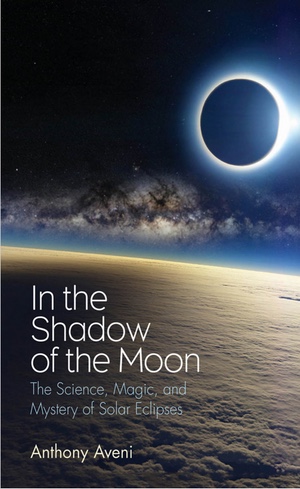Review: In the Shadow of the Moonby Jeff Foust
|
| While not necessarily a practical manual for eclipse viewing, be it of the August eclipse or others, Aveni does offer some tips. “Most spectators spend the precious few moments of totality documenting (my eclipse pet peeve) instead of seeing,” he writes. |
Much of the book is an examination of how solar eclipses were recorded, and reacted to, in various early civilizations. Chapters cover eclipses in civilizations ranging from Greek and Babylonian to Chinese to Aztec and Mayan. The records of solar eclipses in these cultures often go back millennia, as do efforts to calculate and predict future eclipses. Aveni devotes one chapter to studies of Stonehenge, including claims by some researchers that the site could have been used as an eclipse calculator. While not widely accepted, he notes that those studies decades ago led to the development of astroarchaeology as a distinct field, combining astronomy and archaeology.
Aveni devotes other chapters to more recent eclipse studies and observations, including several expeditions in the US, such as the 1878 eclipse in the American west. In 1926, people had to travel far shorter distances, as the edge of the band of totality crossed Manhattan: just a few blocks on the Upper West Side separated observers who saw a brief but total eclipse and those who saw just a crescent of the Sun, allowing astronomers to refine the diameter of the Moon.
In the Shadow of the Moon is not solely a historical account of eclipses, through. Early chapters of the book offer more of an introduction to eclipses, as well as the social elements of observing them. Part of one chapter discusses the relatively recent history of using cruise ships to chase eclipses, something that only started in the early 1970s but which helped create the niche market of themed cruises in general. Aveni has plenty of personal experiences to share as well, having seen eight total eclipses to date.
While not necessarily a practical manual for eclipse viewing, be it of the August eclipse or others, Aveni does offer some tips. “Most spectators spend the precious few moments of totality documenting (my eclipse pet peeve) instead of seeing,” he writes (emphasis in original.) He recalled hearing thousands of shutter clicks from camera during the nearly two and a half minutes of totality on a 1999 eclipse cruise. “A small group of enthusiasts insisted on remaining in an indoor lounge, where they monitored the eclipse on laptops, their preferred medium for experiencing reality.”
Aveni, as you might expect, recommends people put down their cameras and watch the eclipse with their own eyes. He admits, though, that he struggles to put into words what that experience of totality is like. “How can you cast an entirely novel, overwhelming experience in a familiar framework?” he asks. He does state that the experience can be life-altering. “So think of an eclipse as a stop sign, a red light, a brief trip out of the ordinary, or a prompt to rethink how you’re looking at things.” And you’ve got five weeks to get ready for one.
